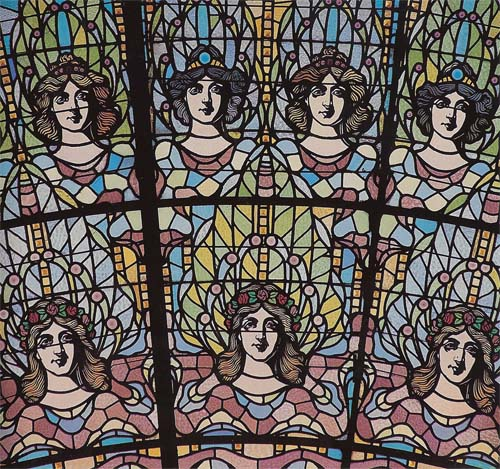Home » Travel - Foreign » Spain » Barcelona » Barcelona – La Sagrada Familia

Barcelona – La Sagrada Familia
We got a bit of a late start but that was planned – this is our last full day in Spain and we plan to see the Sagrada Familia, and the English language tour is at 11A. So, we took a cab, bought tickets, had to ask two different people where to get the tour, found the ticket counter for the tours at the other entrance, waited a bit, and then got to do a 45 minute pass of an amazing cathedral, which was started in 1882 and originally designed by Antoni Gaudi, one of Barcelona’s most famous architects. Perhaps what I find most interesting is that the building mixes some very traditional gothic structures with very modern forms. Gaudi worked on the cathedral most of his professional life. Gaudi died in 1925, and his papers were burned during the Spanish Civil War (labor blamed the church, the army and the oligarchs for trying to overturn the experiment in democracy started in 1931). Luckily, Gaudi worked mostly from plaster models, which escaped the fire; many of these models are on view in the museum at the Sagrada Familia, and are used today to try to build what Gaudi had in mind. The cathedral won’t be done until around 2025.
Note the rope model – this was how Gaudi designed a self-supporting arch system. Each little beige bag is a scaled weight indicating the load on that part of the arch. The ropes naturally form parabolas, which can support the weight (load) attached without extra support. This is an upside-down design, so there’s a mirror above to let you see what the design will look like. Gaudi did this to help design Sagrada Familia.
We had lunch across the street at Els Porxos, Mallorca 410 – it was okay, not super but certainly edible. It was hot and humid today, so we decided to bag going to the Parc Guell, which was designed by Gaudi, and instead headed to the La Ribera area by cab.
We stopped at Palau de la Musica Catalana, which was designed by the modernist architect Lluis Domenech i Montaner. It was started at 1905 and finished in 1908, with rework of the foyer in 1971 (to change the administration area to a cafe) and rework of the stage in the 1980s. The Palau de la Musica Catalana was built for the Orfeo Catala, a professional choral group created in 1891.
We stopped for a pop across the street to cool off, and then headed south towards the the El Born area of the city. First we walked to Mercat de Santa Caterina, a large open market. Then we walked over to Capella d’en Marcus, Barcelona’s smallest religious structure, built in the 12th century. We walked further to Carrer Banys Vells, which is a small shopping street.
We ended our tour at Santa Maria del Mar (St. Mary of the Sea), which is an old church based on the basillica form.
We found a nice tapas restaurant, Lonja de Tapas, on Pia del Palau 7. We found an internet cafe where we could get a new phone card (its much cheaper to use a phone card to call the States rather than using the hotel or cell phone directly). Then a cab back to the hotel so we could repack all our crap and get ready to fly to Amsterdam and then home.
Revisions:
There are no revisions for this post.
Leave a Reply
Special thanks to Dana O' Rouke for helping get this site working!
-

+Bob Hays
- I'm a father and husband, have two schipperkes, like to read, compose music, travel. And I manage a couple software development teams at DIRECTV.































June 29th, 2006 by alephnaught